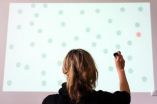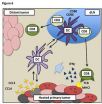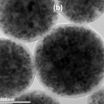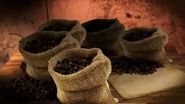(Press-News.org) A stroke can cause permanent damage to important parts of the brain, with the result that many stroke survivors require lifelong care and support. 'It is not uncommon for stroke patients to suffer from an awareness deficit or a reduced response to stimuli on one side of their body. This condition, known as hemispatial neglect, can mean that patients are unable to properly perceive people, images or sounds on that side,' explains Professor Georg Kerkhoff from the Department of Clinical Neuropsychology at Saarland University. 'These phenomena tend to be observed when the right side of the brain is damaged, in which case, the left side of the body is affected.' Another factor that complicates the situation is that patients are often unable to correctly assess their own state of health or even deny that they have a deficit in this area. Experts refer to this aspect of hemispatial neglect as patient unawareness. 'This lack of awareness reduces the chances of therapeutic success and makes treatment more difficult,' says Kerkhoff. 'So far there have only been limited therapeutic options for this group of patients.'
The team of neuropsychologists at Saarbrücken have developed a novel therapeutic approach that has now been tested in two separate studies. In optokinetic stimulation therapy (OKS), patients are shown a cloud of dots on a large screen in which one of the dots is highlighted in a different colour. The dots move horizontally at a constant speed from one side of the screen to the other. Patients must follow the movement of the dots with their eyes. The direction of motion depends on which side of the patient's body is affected. 'If the left side is affected, the dots move from the right side of the screen to the left,' explains Professor Kerkhoff. The dots therefore move from the healthy side of the body to the neglected side. 'This effectively forces the patient to become aware of his neglected side,' says Kerkhoff. Once the dot has reached the edge of the screen, the patient has to move his or her eyes back to the initial fixation point and the exercise begins again.
In order to check how efficient this new method is, the research team ran a study with 50 subjects in which they compared OKS with visual exploration training (VET), which is currently the most commonly used therapeutic procedure for patients with neglect. 'Up until now, patients using VET therapy have only been shown rigid patterns, but patients are generally better able to perceive motion,' explains Kerkhoff. The use of visual motion stimuli activates areas of the stroke patient's brain that are involved in eye movements and that facilitate attention towards the neglected side. 'After five OKS sessions, the subjects had measurably improved perception of sounds and images on the neglected side,' says Professor Kerkhoff. 'And the effect was sustained at follow-up.' In contrast, there was no improvement in symptoms using VET.
In a further study, the research team was able to show that OKS not only trains the senses, but also makes patients better able to deal with day-to-day problems such as locating objects and helps to improve their spatial orientation. After undergoing OKS therapy, patients were also better able to assess their own state of health and were no longer in denial about their functional impairments.
'OKS has been shown to be a very effective method of treatment,' says Kerkhoff, summarizing the results of the two studies. 'OKS speeds up recovery and can be deployed early on in stroke rehabilitation programmes, particularly in the case of patients with a severe lack of awareness.'
INFORMATION:
Note for radio journalists: Studio-quality telephone interviews can be conducted with researchers at Saarland University using broadcast audio IP codec technology (IP direct dial or via the ARD node 106813020001). Interview requests should be addressed to the university's Press and Public Relations Office (+49 (0)681 302-2601).
Details of the studies have recently been published in the following papers:
Kerkhoff et al, Smooth pursuit eye movement training. Neurorehabilitation & Neural Repair, 2013, DOI: 10.1177/1545968313491012
Kerkhoff et al, Smooth pursuit „bedside" training. Neurorehabilitation & Neural Repair, 2014, DOI: 10.1177/1545968313517757
Questions can be addressed to:
Stefan Reinhart
Lehrstuhl Klinische Neuropsychologie, Neuropsychologische Hochschulambulanz
Department of Clinical Neuropsychology, Neuropsychology Department Outpatient Clinic
E-Mail: s.reinhart(at)mx.uni-saarland.de
Phone: +49 (0)681 302-57383
Univ.- Prof. Georg Kerkhoff
Lehrstuhl Klinische Neuropsychologie, Neuropsychologische Hochschulambulanz
Department of Clinical Neuropsychology, Neuropsychology Department Outpatient Clinic
E-mail: kerkhoff(at)mx.uni-saarland.de
Phone: +49 (0)681 302-57380
New therapy helps to improve audio and visual perception in stroke patients
2014-03-04
ELSE PRESS RELEASES FROM THIS DATE:
Outbursts of anger linked to greater risk of heart attacks and strokes
2014-03-04
Outbursts of anger may trigger heart attacks, strokes and other cardiovascular problems in the two hours immediately afterwards, according to the first study to systematically evaluate previous research into the link between the extreme emotion and all cardiovascular outcomes.
The study – a systematic review and meta-analysis – published online today (Tuesday) in the European Heart Journal [1], found that in the two hours immediately after an angry outburst, a person's risk of a heart attack (myocardial infarction (MI) or acute coronary syndrome (ACS)) increased nearly ...
Dartmouth researchers find promising results with local hyperthermia of tumors
2014-03-04
A combination of iron-oxide nanoparticles and an alternating magnetic field, which together generate heat, have activated an immune system response to tumors in mice according to an accepted manuscript by Dartmouth-Hitchcock Norris Cotton Center researchers in the journal Nanomedicine: Nanotechnology, Biology and Medicine released online on February 24, 2014.
"The study demonstrates that controlled heating of one tumor can stimulate an immune response that attacks another tumor that has not had the heat treatment," said Steve Fiering, PhD, Norris Cotton Cancer Center ...
Plant extract hope for infant muscle disease
2014-03-04
Their study is published today (3rd March 2014) in the Journal of Clinical Investigation.
The research team have found that a plant pigment called quercetin – present in some fruits, vegetables, herbs and grains – could help to prevent damage to the nerves associated with the childhood form of motor neurone disease, spinal muscular atrophy (SMA).
SMA, also known as 'floppy baby syndrome', is a leading genetic cause of death in children. It affects approximately one in 6,000 to 10,000 children and around half of children with the most severe form will die before the ...
Researchers develop antibody-targeted treatment for recurrent small-cell lung cancer
2014-03-04
Researchers at Norris Cotton Cancer Center have found an antibody that may be used in future treatments for recurrent small-cell lung cancer, which currently has no effective therapy. The mouse monoclonal antibody they have developed, MAG-1, targets the ProAVP surface marker. When given alone, it significantly slows the growth of tumor xenografts of human recurrent small-cell lung cancer in mice. The study, "Growth Impairment of Small-Cell Cancer by Targeting Pro-Vasopressin with MAG-1 Antibody," was recently published online in Frontiers in Oncology.
"We are developing ...
JCI online ahead of print table of contents for March 3, 2014
2014-03-04
Identification of factors that influence breast cancer metastasis to bone
One of the more serious and frequent complications of advanced breast cancer is bone metastasis, which is exacerbated by TGF-β signaling; however, it is not clear how TGF-β production is regulated prior to and during metastasis. In this issue of the Journal of Clinical Investigation, Guohong Hu and colleagues at the Shanghai Institutes for Biological Sciences evaluated murine models of invasive breast cancer and determined that cancer cells lacking the putative tumor suppressor DLC1 have ...
Youngest kindergarteners most likely to be held back, MU study finds
2014-03-04
COLUMBIA, Mo. -- For some parents, the decision of when to enroll their children into kindergarten can result in costly consequences such as another year of daycare expenses. In general, children must be five years old to be eligible to be enrolled in kindergarten. However, the developmental differences between a young kindergartener who barely qualifies for the state-mandated age cutoff date compared to a child who is almost year older, may have implications. Now, a University of Missouri researcher has found that the youngest kindergartners are about five times more likely ...
UC research tests which nano system works best in killing cancer cells
2014-03-04
In current research related to improving cancer treatments, one promising area of research is the effort to find ways to selectively pinpoint and target cancer cells while minimizing effects on healthy cells.
In that effort, it's already been found in lab experiments that iron-oxide nanoparticles, when heated and then applied specifically to cancer cells, can kill those cells because cancer cells are particularly susceptible to changes in temperature. Increasing the temperature of cancer cells to over 43 degrees Celsius (about 109 degrees Fahrenheit) for a sufficient ...
The chemistry (and fascinating history) of pepper, the spice that changed the world
2014-03-04
WASHINGTON, March 3, 2014 — Pepper is one of the most plentiful condiments in the world today, but it used to be more valuable than gold. In the American Chemical Society's (ACS') latest Reactions video, we examine how pepper's delectable chemistry made it a key player in the global spice trade. The sought-after spice helped usher in the "Age of Discovery," which bridged the gap between the Middle Ages and the Modern era. And because we're celebrating our second month of existence, it's a Reactions double feature this week. In our second video, we examine the science behind ...
Team models photosynthesis and finds room for improvement
2014-03-04
CHAMPAIGN, Ill. — Teaching crop plants to concentrate carbon dioxide in their leaves could increase photosynthetic efficiency by 60 percent and yields by as much as 40 percent, researchers report in a new study.
The team used a computer model to simulate how adding genes from a type of photosynthetic algae known as cyanobacteria might influence photosynthetic efficiency in plants. Cyanobacteria contain small structures, called carboxysomes, which concentrate carbon dioxide at the site of photosynthesis.
"Photosynthesis is the most studied of all plant processes, so ...
Scientists identify protein linked to most common movement disorder
2014-03-04
Quebec City, March 3rd, 2014—A team of researchers from Université Laval and CHU de Québec identified unusually high levels of a certain protein in the brains of people suffering from essential tremor (ET), a movement disorder that affects 4% of the adult population. The discovery, the details of which were published in the most recent edition of the journal Movement Disorders, could lead to an effective treatment for this neurological condition, which is 10 times more prevalent than Parkinson's disease.
As its name suggests, ET causes tremors in various parts of the ...




